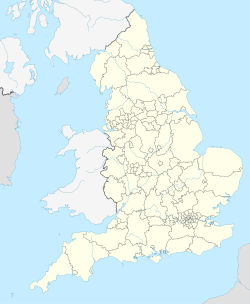| St Mary on the Quay Church | |
|---|---|
 Front entrance | |
| 51°27′16″N2°35′50″W / 51.4545°N 2.5972°W | |
| OS grid reference | ST 58599 73055 |
| Location | Bristol |
| Country | England |
| Denomination | Roman Catholic |
| Previous denomination | Catholic Apostolic Church |
| Website | St Mary site |
| History | |
| Former name | Irvingite chapel |
| Status | Active |
| Dedication | Blessed Virgin Mary |
| Dedicated | 1843 |
| Architecture | |
| Functional status | Parish church |
| Heritage designation | Grade II* listed [1] |
| Architect | R. S. Pope |
| Style | Neoclassical |
| Groundbreaking | 1839 |
| Completed | 1840 |
| Administration | |
| Province | Birmingham |
| Diocese | Clifton |
| Deanery | St Edmund of Abingdon [2] |
Listed Building – Grade II* | |
| Official name | Roman Catholic Church of St Mary on the Quay |
| Designated | 8 January 1959 |
| Reference no. | 1052289 |
St Mary on the Quay is a Roman Catholic Parish church in Bristol, England. It is situated on Colston Avenue, next to Beacon Tower in the centre of the city. It is the oldest Roman Catholic church in Bristol; the first one built after the Reformation. it was formerly administered by the Society of Jesus and is currently served by the Divine Word Missionaries. It is a Grade II* listed building. [1]






